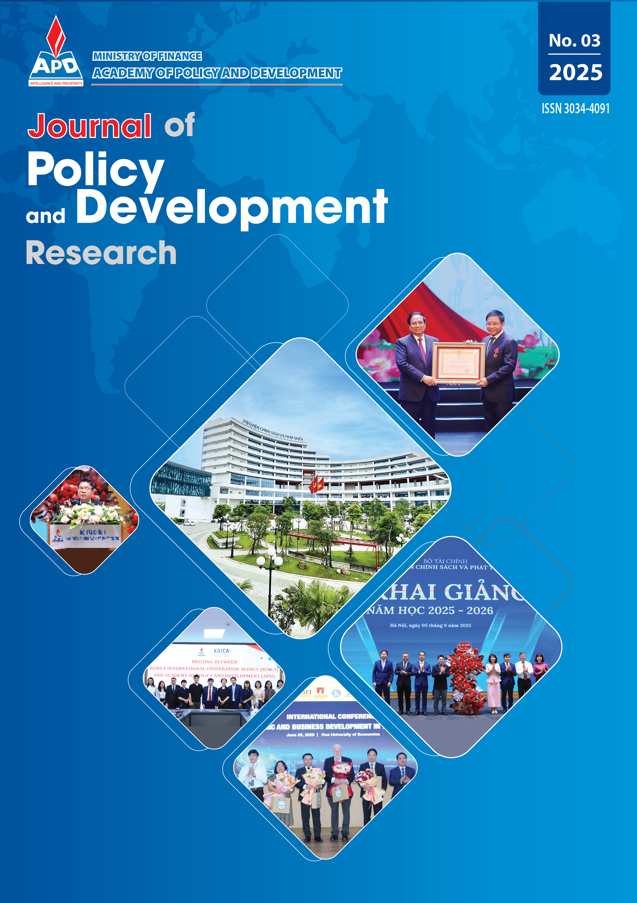Determinants of Regional Economic Growth in Vietnam Empirical Evidence and Policy Recommendations (2022–2024)
Đã Xuất bản
Cách trích dẫn
Số
Chuyên mục
DOI:
https://doi.org/10.63640/3030-4091/jpd.apd.148Tóm tắt
This study analyzes factors affecting the economic growth of 63 provinces and cities in Vietnam during the 2022–2024 period. Regression results from the GLS model indicate that the key input factors: state budget revenue, investment capital, and labor force have a positive impact on regional GRDP. Among them, total investment capital is identified as the most influential factor, not only expanding the scale of production but also directly promoting infrastructure development, enhancing competitiveness, and generating spillover effects across other sectors of the economy.
Therefore, improving investment efficiency becomes an urgent requirement to ensure substantive and long-term growth, particularly in the context of localities transitioning toward a growth model based on innovation, digital transformation, and sustainable development. In addition, state budget revenue also plays a significant role, reflecting the crucial importance of public financial capacity in driving local economic growth. Strengthening fiscal capacity is not only a matter of financial management but also a fundamental condition for implementing public investment policies, social welfare, and integrated infrastructure development.
Finally, the labor force is confirmed as one of the basic inputs fostering GRDP growth; however, its impact coefficient is relatively modest compared to investment capital and budget revenue. This highlights the need to improve labor quality and productivity, which should be considered a strategic priority for the coming period.







